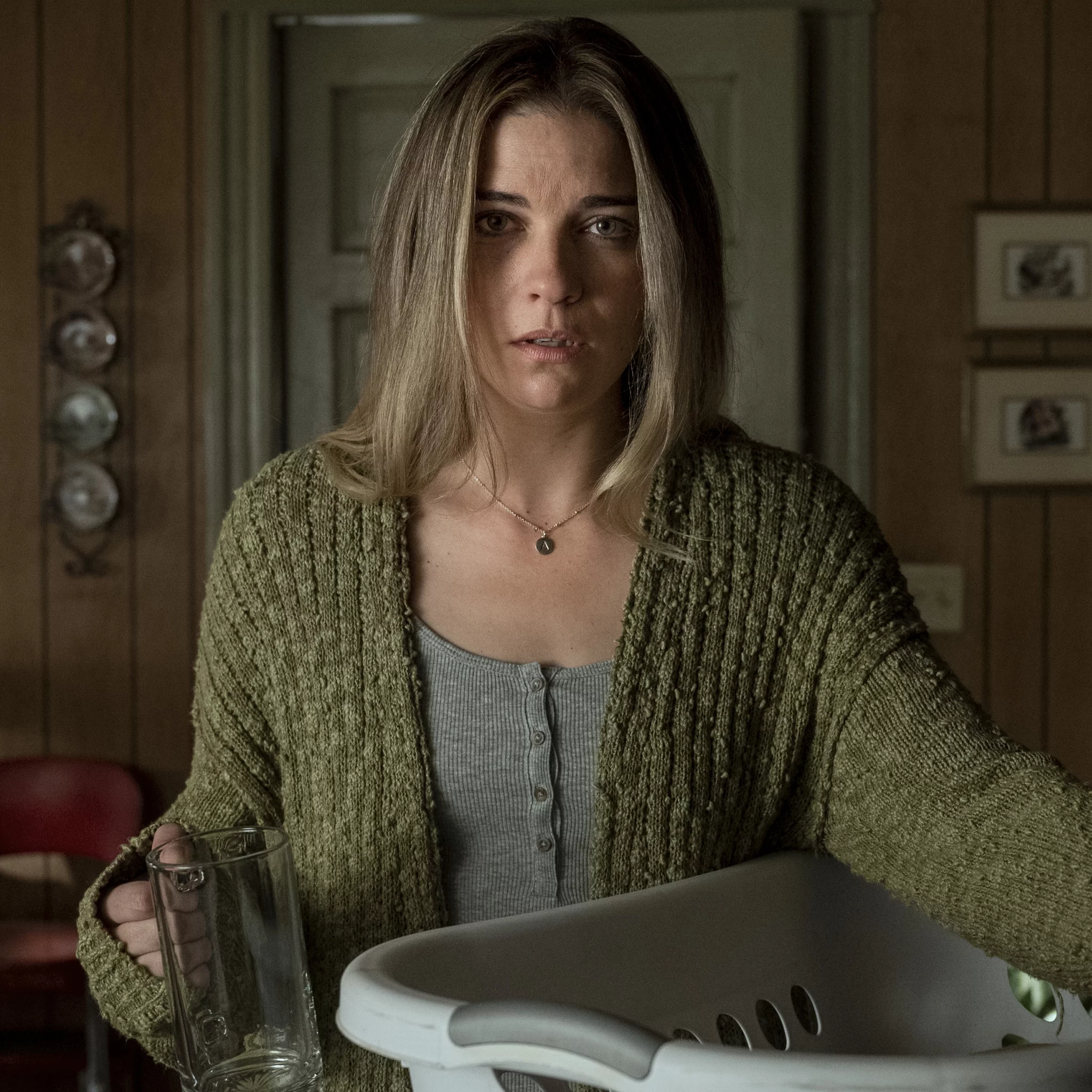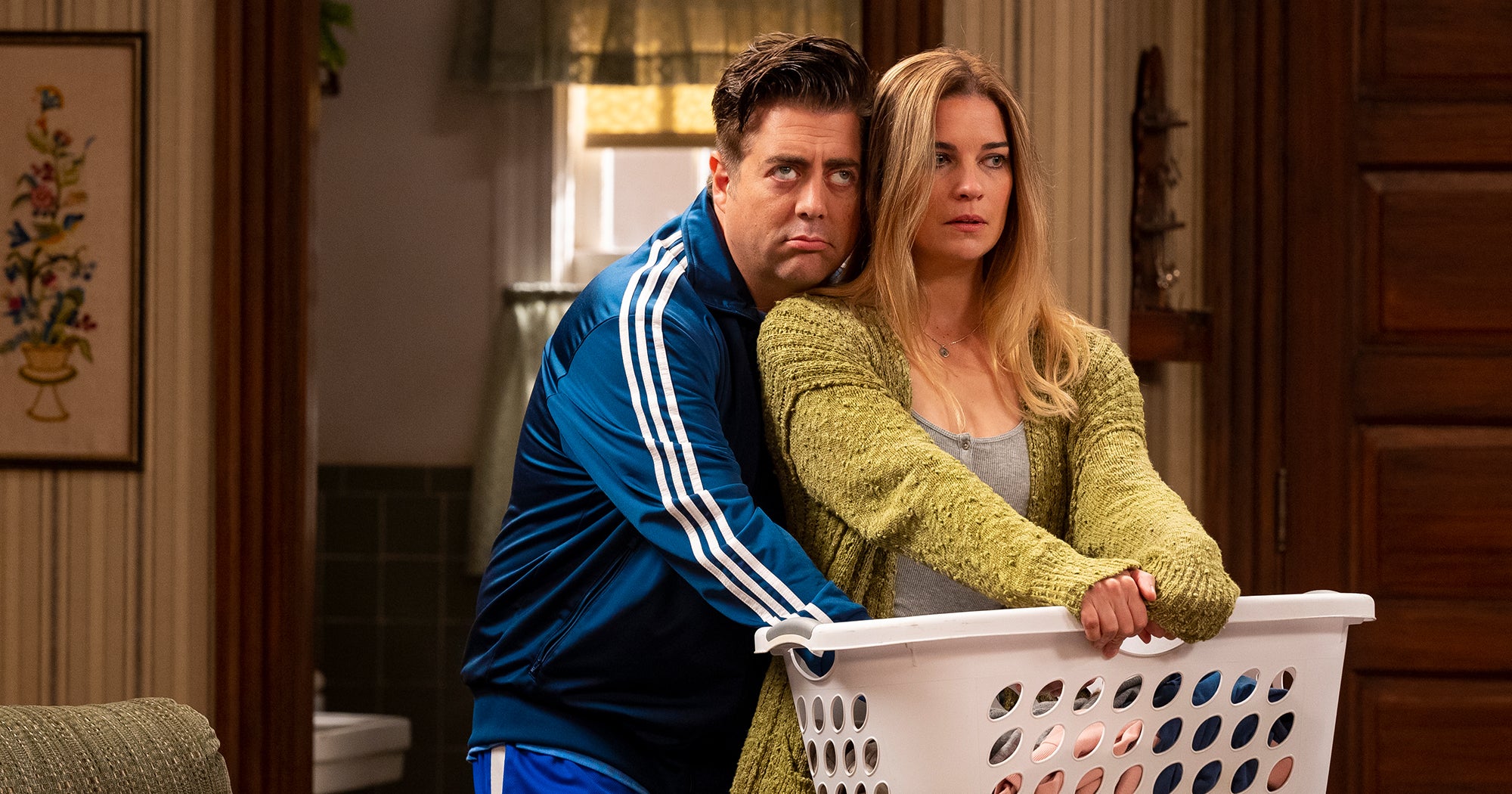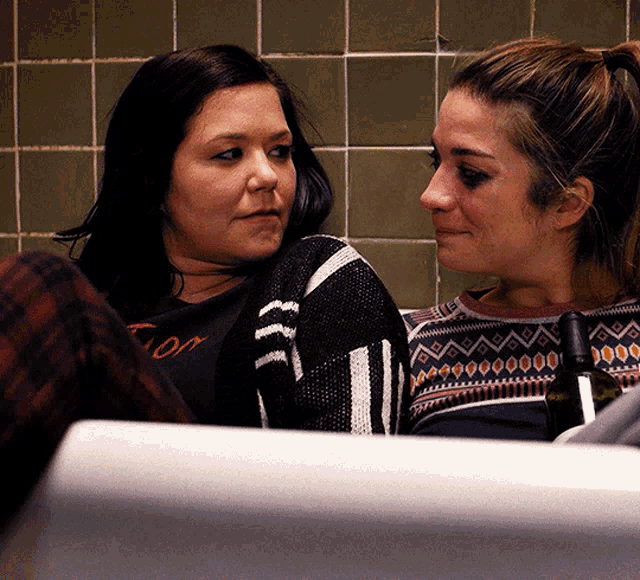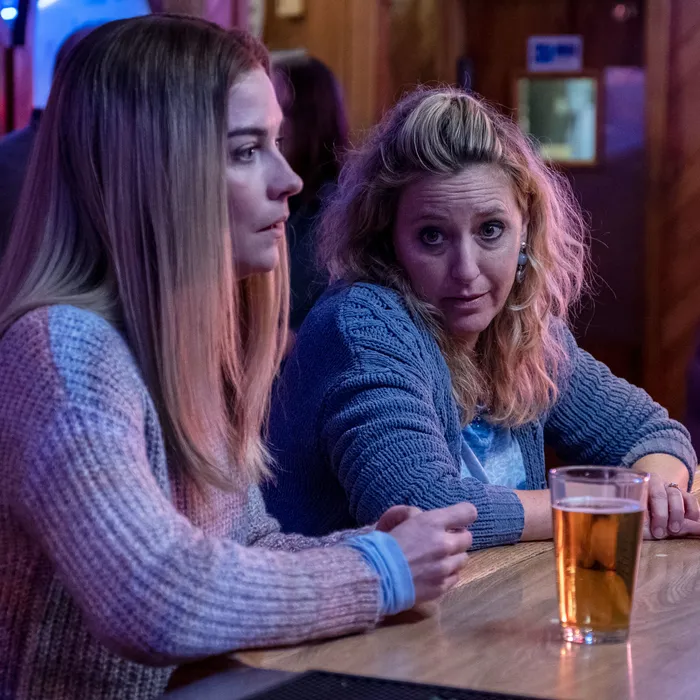Does art not also contain the opposite of this ‘Dionysian’ losing of oneself? Does it not also contain the ‘Apollonian element of entertainment and satisfaction which consists precisely in the fact that the onlooker does not identify [themselves] with what is represented but gains distance from it, overcomes the direct power of reality through its deliberate representation, and finds, in art, that happy freedom of which the burdens of everyday life deprive [them]?1
According to the WHO, one in three women around the world has faced intimate partner abuse at least once in their life. Misogyny pervades all aspects of women’s lives, and the films and TV shows reflect that culture. With tropes like the happy housewife/ nagging shrew, crazy girlfriend, and gold digger, women in media for a long time have been accessories to the male protagonist’s character arc. A recurring pattern in popular American sitcoms, these characters are not only poorly written but also reinforce stereotypes.
“Valerie Armstrong was listening to a discussion on a podcast about how funny, talented actresses still get stuck auditioning for generic sitcom-wife roles when the opening scene of a television pilot started to stream in her head. “The first image came to me, which was just a sitcom wife walking offscreen with a thing of laundry and the audience laughing in the background,” she recalls. “But when she walks through the swinging door into the kitchen, we don’t stay with the funny husband. We follow her. The laugh track cuts, and we’re straight on her face, and she’s miserable. I just saw her looking straight into the camera and saying, ‘I f**king hate my husband.’”2
Kevin Can F*** Himself, in a scathing critique of such media, breaks out of these tropes. On the surface, it is the story about Allison, who is stuck in an unhappy marriage with Kevin, an entitled, sexist man-child. Allison’s character starts as the timid and dutiful wife who quits her job, abandons her dreams and puts up with her man-child of a husband. However, when she realises that Kevin drained all her savings, Allison decides enough is enough. The story then follows her journey to find herself. The show employs two radically different audio-visual styles: Brightly lit scenes in a multi-cam format with a laughter track, typical to sitcoms, and a sombre, tense single-cam visual format associated with more serious genres such as dramas and thrillers.

The scenes with Kevin in them play out like the former, while Allison’s perspective is explored with the latter. The sitcom scenes are a painful performance for Allison, and we see its fallout in her private moments, tense with suffocation. This aspect of the show hits home for me, and I am sure for many other women too, who have experienced ridicule and invalidation in public spaces by known men and strangers alike.

Response to Criticism
Several reviews of the show found Kevin’s character unrealistic and convenient to dislike. But here’s the thing, every woman I know has met a Kevin — a patronising man with a quirky (offensive) sense of humour, always up for providing unsolicited advice. His way of feeling good about himself is putting others down, and he will always find a way to make everything about himself. Everybody loves Kevin, good old goofy Kevin. It’s just a joke! He’s just a prankster. Don’t be so uptight. This is how men are. Effectively, everybody enables Kevin.
In a similar vein, Allison’s character has been criticised for being timid to the point of exaggeration. Yet again, this doesn’t take into account how difficult it is for women to get out of toxic and abusive marriages in a patriarchal society. In India, a majority of married women are expected to devote their lives to their husbands. They are deterred from having a job or even pursuing an education. Their socialisation is controlled by their husband and society at large, which deems ‘rebellious’ women as characterless or arrogant. In essence, women are reduced to the roles of wife, mother and daughter and are prevented from accessing any space or opportunity for them to build their individuality.
Bertolt Brecht noted that in an inequitable society, art created by dominant groups serves to give the illusion that there is a universal human experience. It does so by dissolving inequalities and points of conflict within the different groups in the audience.1 An underdog story is less radical (thus more palatable) when the underdog’s social locus is invisibilised. KCFH unflinchingly highlights and tackles the skewed power dynamic in Kevin and Allison’s marriage. What is being called “unreal” in KCFH is actually reality stripped off all the facades that obscure abuse. If you find the show unnecessarily or exaggeratedly bleak, maybe ask yourself if it is because somewhere you feel called out.
Sisterhood in Fiction
Allison and, her neighbour, Patty’s friendship is one of the greatest explorations of the interiority of women trying to find a way out against all odds. Patty’s character (the sister of Kevin’s best friend Neil) seems like a cool girl trope, passively spectating and enabling Allison’s humiliation, but we soon learn that she is not that different from Allison. While Allison puts up with her husband, Patty puts up with her brother - paying his mortgage, bailing him out, and paying his bills. Stumbling and growing in each other’s company, Patty and Allison develop a sincere camaraderie.

KCFH is about real women, angry women, sad women and happy women. We see them make mistakes, we see them cry, and most importantly we see their internal conflicts. Unsurprisingly, several people ask Allison: why didn’t you just leave him? A question that is repeatedly spat at survivors of abuse and violence, we see Allison and also her aunt Diane (played by the marvellous Jamie Denbo) struggle to find an answer. But in reality, women in such marriages often get cut off from social support systems of support. Housewives in particular, with no independent income, not only have to consider their safety but also if they will be able to sustain themselves in job markets that are hostile to women in general.
Allison and Diane often reflect on how much of themselves they gave away to maintain a household. And we watch them reclaim their identities outside their marriages, in imperfect but real ways. Survivors of traumatic events are expected to grieve in a certain way, heal in a certain way… and dare we feel happy! Our response to trauma must cause the least amount of discomfort to others. But Allison, Diane and Patty are not a helpless victims, they are humans who are not defined by their trauma. They find joy, leisure, love and laughter, even when the world is pitted against them. It is these moments, which ring true to my experiences as well, when they reject the template that is forced onto them; which is why I strongly object to the show being described as “bleak”. It isn’t, it is complicated.

Invisible Violence and Patriarchal Claustrophobia
As compared to traditional dramas whose stakes rely on physical violence, this show explores the violence of gaslighting and psychological abuse. The show’s tension stems from the micro-aggressions that Allison experiences. While this is not as captivating as intricate chase sequences, violence, or dramatic stand-offs, the show hits the nail on the head when it comes to encapsulating the alienation women face in a world that not only subjects them to violence but also denies its existence.
Thus, much of this violence arising from abusive dynamics are invisible to outsiders, and at times even to the people in the relationship. When a relationship falls apart, the women are questioned. Their irrational reactions to abuse are used against them. A woman is expected to be the perfect victim, and if she isn’t, the world makes it a mission to hunt her down, as was made clear in the recent defamation trial of Johnny Depp. This nature of psychological violence makes it insidiously difficult to articulate. And Kevin Can F*** Himself does an exceptional job of exploring it. I myself found it very difficult to watch at times, not because anything particularly gruesome was happening on screen, but because I could feel Allison’s anxiety.
Kevin Can Seriously F*** Himself
But its greatest accomplishment is that although Kevin tries his best to make everything about him, KCFH is not about Kevin at all. It is a story of women reclaiming their personhood in each other’s company under, perhaps, not the best circumstances. There are moments when the script feels weak in its attempt to be both a tragedy and a comedy. But the show regains its pace towards the end of the first season. With stellar performances by Annie Murphy, Mary Holles Inboden and Eric Petersen, the show truly finds its voice and purpose in season two. As Allison and Patty explore the newfound freedom in the space of their friendship, the show discards all that is unimportant to it.
In a world where women are fighting to get safe abortions and their right to dress as they wish, I often feel very pessimistic about my future. At times like these, I find courage in visions of better futures through fiction and poetry. Fiction in its unreality, allows us to reinvent ourselves. It allows us to experiment with people we could be, and societies that could exist and lends us momentary control of our lives.
And so, just as language represents the accumulation of the collective experience of millennia in every individual, just as science equips every individual with the knowledge acquired by the human race as a whole, so the permanent function of art is to re-create as every individual’s experience the fulness of all that [they are] not, the fulness of humanity at large. And it is the magic of art that by this process of re-creation it shows that reality can be transformed, mastered, turned into play.2
Kevin Can F*** Himself is a landmark in its exploration of the secret lives of women in toxic relationships and is unapologetic in its experimentation with tropes. Most importantly, it isn’t empowering despite its unreal aspects, it is through its fiction that it manages to find its truth, and therein lies its victory.
Ernst Fischer, John Berger, and Anna Bostock. 2010. The Necessity of Art. London ; New York: Verso. ↩︎ ↩︎
Chaney, Jen. 2021. “How the Creators of Kevin Can F**K Himself Made Two Shows at the Same Time.” Vulture. June 18, 2021. https://www.vulture.com/article/how-kevin-can-f-himself-was-made.html. ↩︎ ↩︎